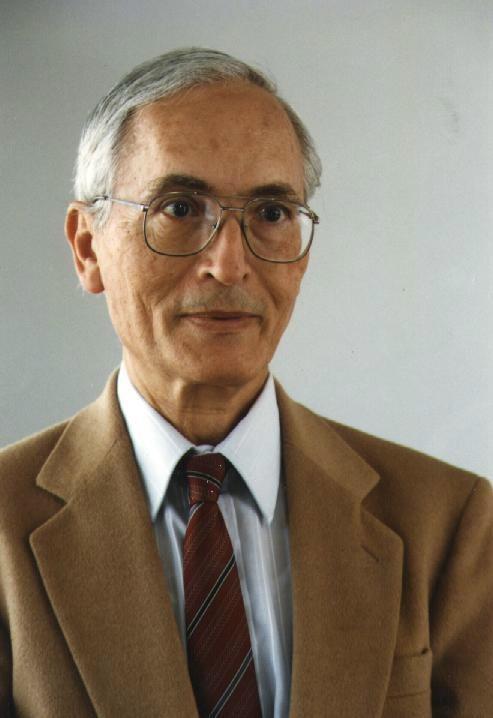The Spanish BBVA award, in the amount of 400 euros, was given to Professor Ziv in the field of information technology for "his groundbreaking inventions in the field of information compression"

The Spanish BBVA Foundation's Frontiers of Knowledge Award, the second largest after the Nobel Prize (400 euros), was given to Research Professor Emeritus Jacob Ziv from the Faculty of Electrical Engineering at the Technion, for "his groundbreaking inventions in the field of information compression and information theory."
The BBVA Foundation awards recognize and encourage research and creativity in the basic sciences, biomedicine, environment, information technologies and economics, as well as creative achievements in the arts and in the field of climate change. The awards are given for projects or research works. The total prizes - 3.2 million euros, and they are distributed annually in eight categories - 400,000 euros in each category.
Professor Yaakov Ziv won the Frontiers of Knowledge award in the field of information and communication technologies for 2008. "Yakov Ziv's groundbreaking inventions in information compression have profound and lasting implications for the world of communication and information technologies both in theory and in practice," stated the decision of the fund's judges. "Professor Ziv's contribution, evident in every aspect of our daily lives, enables the efficient storage and transmission of text, data, images and video. Information compression technologies in computer memories, modems, distribution of software and files - all these are currently based on the ideas and inventions of Professor Ziv. His pioneering contributions to information theory motivated and guided generations of people in academia and industry. The award is an expression of recognition for his central role in the creation of technologies that have a profound and extensive impact on the information age."
lossless compression, or "compression without loss of information", developed by professors Yaakov Ziv and Abraham Lampel from the Technion, means that the transmitted/saved information can be restored in its entirety, so that its quality will be the same as the original. The Lampel-Ziv technique is the most common method for such compression, and is found in popular compression formats such as GZIP, GIF and TIFF.
Professor Ziv, Emeritus Research Professor in the Faculty of Electrical Engineering at the Technion, former President of the Israel Academy of Sciences, member of leading American and European scientific societies, primarily the American National Academy of Sciences, the American National Academy of Engineering and the American Philosophical Society, and winner of the Marconi Prize named after the inventor of radio.

5 תגובות
A. Ben-Ner:
Although I suppose you can google the history of the algorithm, but I prefer to bring up personal memories here.
I served as head of a software branch in one of the computer units in the late seventies and early eighties.
Somewhere during this period, we put the PC into use in the IDF and one of the problems that made it difficult to use was the memory limitations on its disks.
As a result of this limitation, I decided together with one of my subordinates - a talented guy named Ilan - that it was worth writing a new driver for the disk - a driver that would compress the data and increase the capacity of the disk.
To that end, I got Ilan an article describing the Ziv-Lampel compression method and he did write the driver.
Later it turned out to me that when Ilan was released, he took a CD with this driver and sold it to an Israeli company that sold it to Microsoft.
Microsoft marketed this product at first as a separate product - under the name Doubledisk and later as part of the DOS 6 operating system under the name DoubleSpace.
This is one of the lesser known contributions of the IDF's software units to the development of computing in the world.
In any case - it is clear from the above that the algorithm was developed before 1981.
Well - I didn't hold back and went to search on Wikipedia. It turns out that the algorithm was developed in 78
http://en.wikipedia.org/wiki/LZW
A. Ben-Ner
LZH compression became widely used around 1990 and it comes from an abbreviation of Lempel Ziv
Later they created a lot of variations as you know
No. Ben-Ner - To learn something about Prof. Jacob Ziv I recommend going to google.com and typing JACOB ZIV to view the results and be impressed by their quantity and quality, the material will give you an idea about the man and his contributions to science in the world and to the State of Israel.
Perhaps someone knows when, more or less, the groundbreaking works of Fr. Ziv and Lempel were done?
I believe that, in order to win an important prize, from this one, at least two necessary conditions and one sufficient condition should be met.
The two necessary conditions are:
1. May you have an important breakthrough development discovery
2. May you win and give me days and lives. About 30 years and more after the discovery, until it's your turn to win the prize.
The necessary condition is:
3. May you be lucky and your discovery will catch the eye of various award committees from the abundance of discoveries and developments that the world of science and technology offers today.
4. Then what remains for you is to divide the amount of the award between the grandchildren, of course equally, and write it down in the will.